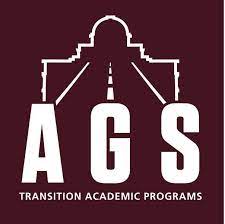Tamu Minimum Syllabus Requirements
Universities around the globe recognize the syllabus as more than just a course outline; it’s the foundational pillar that guides educators and students throughout a semester or term. In such a landscape, Texas A&M University, colloquially known as TAMU, isn’t an outlier. Indeed, they’ve refined the art of syllabus creation into a structured process, demanding adherence to specific guidelines. Such meticulous attention to detail emerges not from bureaucracy, but from an understanding of the syllabus’s pivotal role in shaping academic journeys.School News Portal
At TAMU, a syllabus serves a multitude of purposes. First and foremost, it stands as a tangible contract, a documented agreement between the professor and the students. This contract spells out the rights and responsibilities of both parties, ensuring transparency and clarity. Additionally, the syllabus paves the academic path, providing direction and setting expectations for learning outcomes, evaluation methodologies, and class conduct.
However, it’s also worth noting that while individuality and innovation in course design remain vital, a set of minimum requirements ensures some level of academic uniformity across the board. This critical balance between autonomy and standardization ensures that every student at TAMU, irrespective of their chosen course or professor, begins their educational journey with clear, consistent, and comprehensive guidelines. This article aims to unpack these TAMU minimum syllabus requirements, offering a deep dive into their nuances and significance amu Minimum Syllabus Requirements.
Read Also: TAMU Undergraduate Admission Requirements
Tamu Minimum Syllabus Requirements
1. Understanding the Significance of Syllabus Requirements
Firstly, it’s essential to comprehend why universities, particularly TAMU, place importance on these requirements. Essentially, a well-crafted syllabus:
- Acts as a Contract: At its core, the syllabus forms a kind of implicit agreement between the educator and the student. Not only does it outline the expectations but also lays out the resources, assignments, and evaluations.
- Provides Structure: For students, a clear syllabus acts as a roadmap. It systematically breaks down what they’ll learn, when they’ll learn it, and how they’ll be evaluated.Tamu Minimum Syllabus Requirements
- Ensures Consistency: Especially for universities with large student bodies like TAMU, maintaining some level of uniformity is vital. This ensures that students, irrespective of the professor or section, receive a roughly analogous educational experience.
Read Also: Texas A&M Duolingo Requirements
2. Key Components of TAMU’s Minimum Syllabus Requirements
Now, let’s transition to the heart of the matter. Here’s what TAMU expects, at the very least, to be part of every course syllabus:
- Course Details: Starting off, every syllabus should include the course title, course number, meeting times, and location. Additionally, a brief course description gives students an initial sense of what the course encompasses.
- Instructor Information: Naturally, students should know who’s teaching them. Include the instructor’s name, office location, contact information, and office hours.
- Course Goals & Objectives: What do you aim to achieve by the end of the course? Lay it out clearly, so students grasp the purpose and the broader significance of the course content.
- Assessment Methods: From quizzes to assignments to exams, students need to know how you’ll evaluate their grasp of the material. Furthermore, providing weightage of each assessment type helps in setting clear expectations.
- Course Schedule: This acts as a weekly or session-wise breakdown of topics, readings, and any associated assignments. It helps students plan their studies accordingly.
- Attendance & Participation Policies: Clearly delineate what you expect regarding class attendance and participation. Also, outline the consequences of not meeting these expectations.
- Academic Integrity Statement: TAMU takes academic integrity seriously. Consequently, every syllabus should feature a statement on plagiarism and cheating, directing students to university policies on these issues.
- Accessibility Statement: To ensure inclusivity, TAMU mandates an accessibility statement. This informs students with disabilities about their rights and the resources available to them.
Read Also: TAMU Visualization Laptop Requirements
3. Additional Information: Going Beyond the Minimum
While the above elements form the foundation of TAMU’s minimum syllabus requirements, educators often find value in adding more. Here are a few considerations:
- Teaching Philosophy: Briefly, describe your approach to teaching and how you aim to facilitate learning. This gives students a sense of your style and expectations.
- Recommended Resources: Often, there’s more to a subject than just the core readings. Offering additional resources can be incredibly beneficial for enthusiastic students.
- Feedback Mechanism: Setting up a system for students to provide feedback can be valuable. It helps educators adapt and refine their teaching methods over time.
Read Also: TAMU Undergraduate Admission Requirements
ConclusionIn wrapping things up, it’s evident that crafting a syllabus, especially within the TAMU framework, isn’t just about fulfilling a requirement. It’s about setting the stage for a semester of growth, understanding, and collaboration. While the minimum requirements lay the groundwork, the art lies in how educators expand upon it, making the course their own while still providing the consistent experience TAMU aims for. Remember, the syllabus isn’t just a piece of paper or a digital document—it’s the blueprint for success, both for the educator and the student.
Read Also: Texas A&M GPA Requirements 2023

